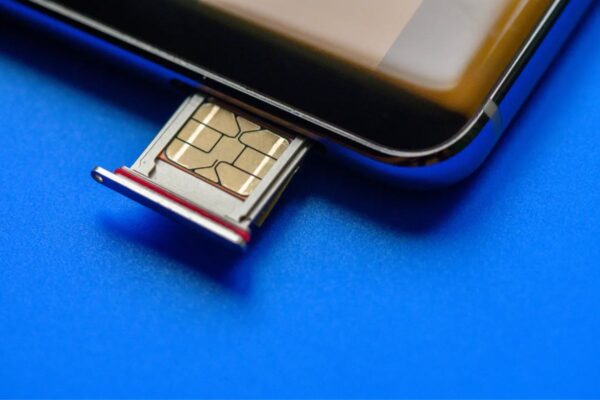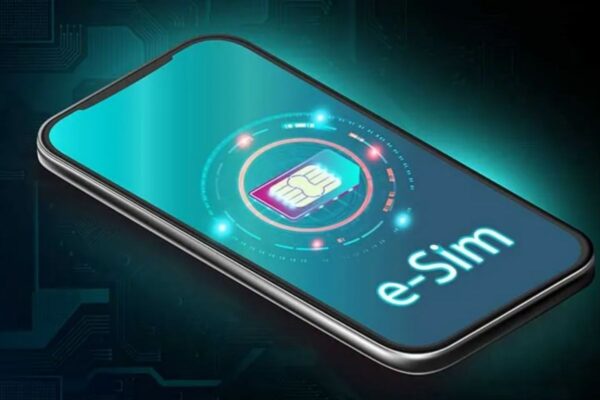What is an eSIM? Know about the Advantages and Disadvantages of using eSIM

What is an eSIM? Know about the Advantages and Disadvantages of using eSIM
Understanding the benefits and drawbacks of eSIM
The eSIM, also comprehended as an embedded SIM, isn’t exactly a recent development in technology. But because fitness-focused wearables and smartphones like the Google Pixel series, Samsung Galaxy S and Z-series, and Apple iPhones, especially the iPhone 14, solely use eSIMs in the US, it is swiftly gaining popularity.
But what do eSIMs truly do? How do they function? Will SIM cards be entirely replaced by them? What are its benefits and drawbacks, and most crucially, should you purchase one?
What is an eSIM?
An eSIM, or embedded SIM, is the same hardware as a standard SIM card chip but is now a permanently incorporated component of the motherboard of a watch or smartphone if the name doesn’t already make it clear.
Similar to a typical SIM card, an eSIM is made up of a few parts that are now a part of the internal workings of your phone. They also serve the same purpose, serving as a distinctive identifier that allows telecom operators and other users to find your specific smartphone when they call or text you.
Being connected to the motherboard, however, also enables re-programming, enabling users to switch carriers without having to swap out any actual SIM cards. Despite potential prospective use cases, eSIMs, which were originally introduced in 2012, have not replaced regular SIMs as of yet. This is because eSIMs have some drawbacks in addition to their benefits. Here’s a closer examination of each.
Advantages of eSIM

Convenience: The primary benefit is simplicity. The transition to eSIMs will only be necessary once if you don’t frequently deal with changing SIM cards or phones. When you travel to a different state or nation and might wish to transfer to a different operator, it will also save you the trip to a telecom store or service centre. You can move between profiles without physically switching cards or repeatedly activating a SIM by using the ability to keep several SIM profiles in your eSIM.
Security: Due to lock screens, biometric activation, and remote locking features, thieves may not be able to use a phone that has a physical SIM card if it is lost. They are still able to remove your SIM card and insert it into a different unlocked phone, enabling them to make calls, send texts, or, worse yet, use your phone number to access your bank or social media accounts. For attackers, this process is quicker and simpler than you may imagine. This cannot happen with an eSIM because there is no physical component to remove and insert into another device.
One less opening on your phone’s frame: According to theory, having an eSIM also means there is one less opening on the phone’s frame, which should lessen the possibility of contaminants like dust and water getting inside the phone through yet another slot. Additionally, since today’s typical nano-SIMs are already quite small, it should free up some space inside the phone that can be used for other purposes. However, this benefit is unlikely to be significant.
Disadvantages of eSIM

Emergencies: With eSIMs, communication is completely cut off if your phone breaks down, loses power, falls over, or just cracks its screen. Meanwhile, conventional SIMs may be easily removed from the harmed phone and put into a backup device or alternative phone.
Unusable in nations without eSIM support: You are unable to use an eSIM phone in a nation where the telecom providers have not yet adopted the technology. This isn’t a problem if your phone accepts both eSIM and conventional SIM cards, but it is with phones like the US version of the iPhone 14, which will only accept eSIM.
Support limited to high-end phones: In India, eSIM support is presently only offered on more costly phones, like the Apple iPhones, Google Pixel smartphones, and Samsung Galaxy S and Z series, all of which can be prohibitively expensive for the typical consumer. Users will also be limited to selecting from a considerably smaller range of devices that support the technology by upgrading to an eSIM.
Telcos exercise more authority: While using an eSIM may spare you the initial trip to the telecom provider’s store to obtain your SIM card, you can expect to always need to work with your operator whenever you want to transfer phones. While most individuals may not find this to be a problem, many are worried about the power this provides operators, who may later decide to charge more for eSIM plans or switch phones. People who constantly swap phones might also not want to get in touch with operators.

Why do you need to get an eSIM?
Those will rely on your requirements and usage situations. Most people who currently use a physical SIM won’t notice much of a change if they switch to an eSIM. To lock their identities with their devices in case of theft, users concerned about the security and privacy of their SIM cards can switch to eSIM.
However, even though utilising eSIMs is currently free in India, customers will only be able to use luxury handsets, which are far more expensive than entry-level or mid-range models.
The Indian version of the iPhone 14 series will have both eSIM capability and a SIM card slot, allowing you to select between the two options as you see fit. If you purchase an iPhone 14 series handset from the US, you will be the only one who needs to switch to an eSIM.
Considering that most smartphones across the lower segments rely on technology and that there are advantages of physical SIM cards for which there isn’t yet a workaround, expect the plastic SIM cards to remain relevant for now. As for the question of whether eSIMs will completely replace physical SIM cards, that may be possible years from now.
Are eSIMs Available on Every Smartphone?
Only a few of the newest smartphones and wearables currently on the market include an eSIM. These consist of:
- All of Apple’s most recent iPhone models, including the iPad Pro, iPhone XS, iPhone XS Max, and iPhone XR.
- The Galaxy S20, S20+, and S20 Ultra from Samsung
- The Pixel 3 and 3 XL from Google
- The Motorola Razr (which solely uses an eSIM and lacks a conventional SIM card)
- The Gear S2 and Gear S3 smartwatches from Samsung
- Series 3, 4, and 5 of the Apple Watch
Are eSIMs Supported by All Networks?
Although not all networks currently allow eSIMs, they will in the future as this technology becomes more widespread.
Jio and Vodafone Idea (Vi) presently offers some eSIM support in India.
edited and proofread by nikita






